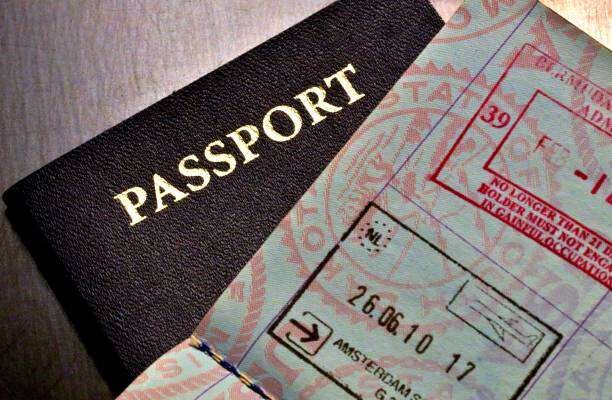What is the purpose of a invitation cards for naming ceremony?
Introduction
A naming ceremony is a significant event that marks the formal announcement of a baby’s name. In many cultures, it’s a joyous occasion, filled with love, blessings, and the gathering of close family and friends. Whether the ceremony is religious, cultural, or simply a modern celebration, it’s a moment to welcome a new member into the world.
One of the key elements in planning a naming ceremony is the invitation cards for naming ceremony. But why are invitation cards so important for this event? Let’s explore how they serve both practical and sentimental purposes, helping to make the event more memorable and organized.
Why Invitation Cards Are Important for a Naming Ceremony
Invitation cards for naming ceremonies do more than just provide information—they set the tone for the event. These cards serve several purposes:
- Setting the Tone: The design, color scheme, and wording of the card give the guests an idea of what to expect from the event. Whether it’s a formal gathering or a casual celebration, the card is the first glimpse into the nature of the occasion.
- Formally Inviting Guests: Sending an invitation card is a way to formally invite loved ones to the ceremony. It adds a touch of importance and respect to the event, making guests feel valued.
- Sharing Essential Details: The card provides important information such as the date, time, and location of the event. Additionally, it may include dress codes, gift preferences, or any other instructions, ensuring the event runs smoothly.
Personal Touch in Invitation Cards
An invitation card offers a personalized touch that reflects the family’s personality, beliefs, and traditions. Some families opt for more traditional designs that incorporate their cultural or religious heritage, while others prefer modern, fun, and quirky invitations.
- Reflecting Family Traditions: The design of the card can reflect family values, be it a religious symbol, a specific color scheme, or even a traditional pattern. For instance, in Hindu naming ceremonies, invitations often feature images of deities like Lord Ganesha, which is believed to bring blessings.
- Personalizing the Invitation: Adding personalized messages, quotes, or even the baby’s picture can make the invitation feel special. It’s a way for the family to express their joy and excitement about the upcoming celebration.
Symbolism in Naming Ceremony Invitation Cards
Symbolism plays an important role in designing invitation cards for naming ceremonies. The colors, patterns, and symbols used in the card design often carry deep meaning.
- Significance of Design and Colors: Many families choose colors that have special meanings. For example, gold may symbolize prosperity, while white represents purity. Floral designs or doves can symbolize peace and new beginnings.
- Use of Religious or Cultural Symbols: Depending on the family’s beliefs, certain religious or cultural symbols can be included. A Christian family may include a cross, while a Jewish family might incorporate a Star of David.
How Invitation Cards Help Organize the Event
In addition to being symbolic and beautiful, invitation cards help in organizing the event efficiently.
- RSVP Management: Invitation cards often include RSVP options, helping families gauge the number of attendees. This is crucial for planning seating, catering, and other logistical elements of the ceremony.
- Coordination of Guest Lists: Having a formal list of invitees helps manage who has been invited, who’s attending, and who’s not. This ensures that no one is left out, and everyone feels included in the celebration.
Types of Naming Ceremony Invitation Cards
There are different types of invitation cards that suit various preferences and styles. Choosing the right type depends on factors like tradition, formality, and budget.
- Traditional vs. Modern Invitations: Some families prefer traditional invitation cards that reflect their culture or religious practices. Others may opt for modern designs with minimalistic features, focusing on simplicity and elegance.
- E-Invites vs. Printed Invitations: With the rise of digital platforms, many families are turning to e-invites for convenience and cost-effectiveness. However, printed invitations still hold a special charm, as they can be kept as keepsakes for years to come.
What Information Should Be Included?
When designing an invitation card for a naming ceremony, it’s important to include all the essential information. Missing out on key details can lead to confusion and disrupt the event.
- Name of the Child and Family: The central focus of the event is the child, so the invitation should clearly state the name of the child, along with the family’s name.
- Date, Time, and Venue: Ensure that the date, time, and venue are clearly mentioned. If the ceremony has multiple stages, like a religious function followed by a party, provide details for each.
- Special Instructions or Requests: Some families may have specific requests, such as a particular dress code, dietary restrictions, or parking instructions. It’s a good idea to include these on the card to ensure everything runs smoothly.
Design Ideas for Naming Ceremony Invitations
There are endless possibilities when it comes to the design of naming ceremony invitations. Whether you’re looking for something elegant or fun, here are some design ideas:
- Elegant and Formal: For a classic touch, choose a sophisticated color palette such as ivory, gold, or pastel hues. Add elegant fonts and minimalistic designs to give the invitation a timeless look.
- Fun and Playful: If you want something more playful, use bright colors, cute illustrations, or even animated designs. Themes like animals, balloons, or toys are great for making the invitation light-hearted and joyful.
Themes for Naming Ceremony Invitation Cards
Themed invitation cards can make the ceremony even more special by tying everything together. Here are a few popular themes:
- Religious Themes: Many families choose to incorporate religious elements into the design, such as symbols or quotes from holy texts.
- Cultural Themes: If the family is rooted in a particular culture, a theme that celebrates those traditions can make the card even more meaningful. For example, in a Hindu ceremony, adding elements like lotus flowers or om symbols can be significant.
- Contemporary Themes: For families looking for something modern, contemporary themes with clean lines and bold typography can be a great choice.
Conclusion
In conclusion, invitation cards for naming ceremonies serve both a practical and sentimental purpose. They are more than just a formal request for attendance; they reflect the family’s joy, culture, and personal style. From managing RSVPs to setting the tone for the event, these cards play a crucial role in making the ceremony memorable and organized.






